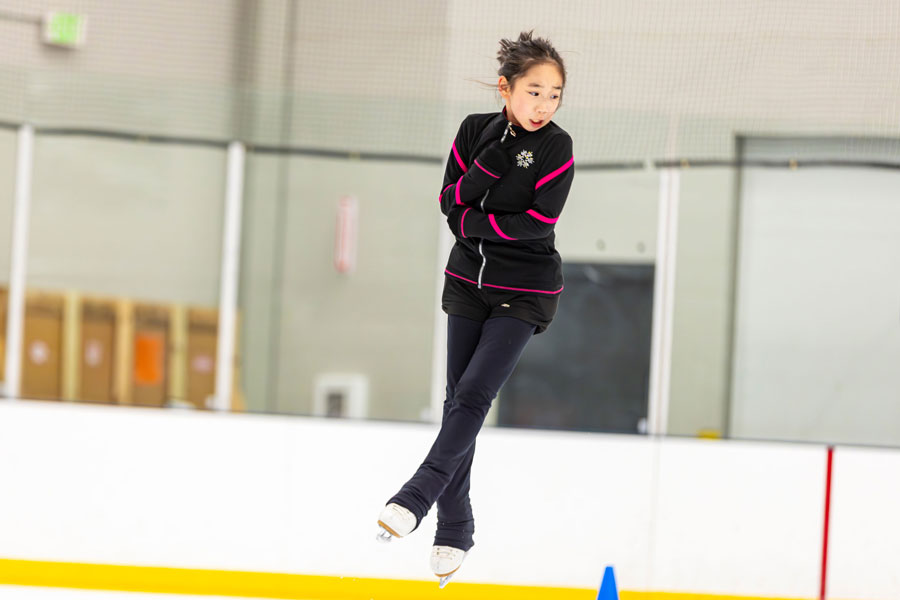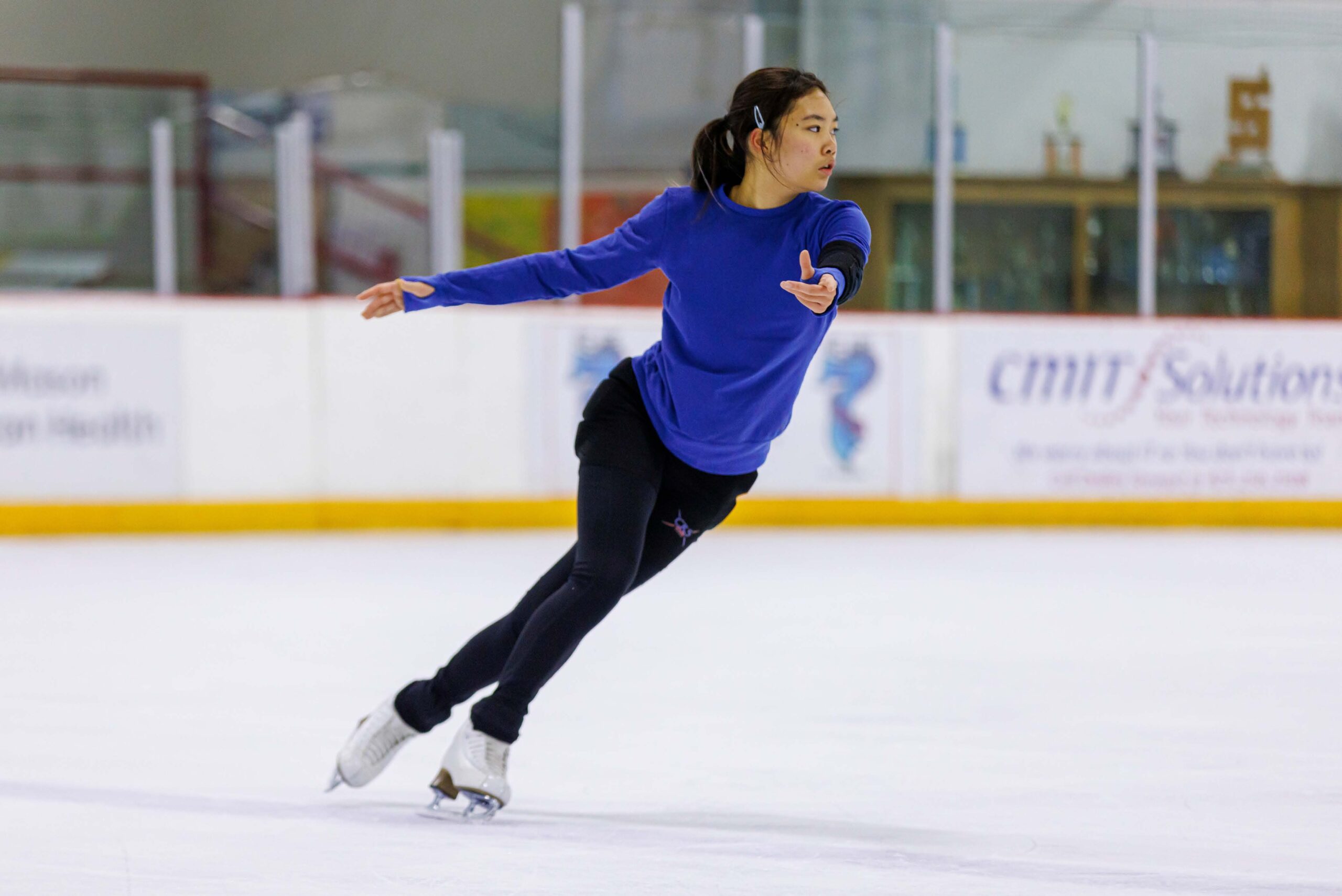If you’re new to ice skating, you might think all the training has to happen on the ice, but that’s far from the truth! Off-ice training is essential for building strength, balance, and flexibility, all of which will help you glide more smoothly, improve your control, and reduce the risk of injury. In this guide, we’ll cover essential off-ice exercises and routines for beginner ice skaters that can help boost your confidence and performance on the rink.
Why Off-Ice Training Matters for Skaters
Ice skating requires more than just basic balance and leg strength—it engages almost every muscle group, along with a strong core and flexible joints. Off-ice training helps beginner skaters develop key muscle groups, improve coordination, and build stamina, allowing them to progress faster and more confidently on the ice.
1. Building Core Strength for Stability
A strong core is the foundation for ice skating, as it supports your body through twists, turns, and even simple glides. Core stability allows you to stay balanced while shifting weight and transitioning between movements.
Recommended Core Exercises:
- Plank: Hold a standard plank for 30–60 seconds, keeping your core tight and your body in a straight line.
- Russian Twists: Sit with your legs bent, lean back slightly, and twist your torso from side to side. This helps improve rotational stability.
- Bicycle Crunches: Lie on your back, lift your legs, and bring each knee toward the opposite elbow. Aim for 15–20 reps per side.
How It Helps: A strong core provides stability and balance, which is essential for learning new skating moves and holding positions confidently on the ice.
2. Lower Body Strength for Power and Endurance
Your legs do most of the work in ice skating, making lower body strength a top priority for beginners. Training these muscles off the ice helps you build the power you need for pushing off, gliding, and stopping with control.
Recommended Lower Body Exercises:
- Squats: Bodyweight squats are a great starting point for building leg strength. Aim for 2–3 sets of 15–20 reps.
- Lunges: Forward and reverse lunges target your glutes, quads, and hamstrings. Do 10–12 reps on each leg.
- Calf Raises: Stand on a step or solid surface and lift onto your toes. Try 3 sets of 15–20 reps to strengthen your calves.
How It Helps: Stronger leg muscles improve your ability to generate power, making it easier to propel yourself forward and maintain a steady pace on the ice.

3. Balance Training for Control and Coordination
Balance is a crucial aspect of ice skating, as it helps you remain stable on a narrow blade. Practicing balance exercises off the ice is a great way to build coordination and reduce the chances of falling.
Recommended Balance Exercises:
- Single-Leg Stand: Stand on one leg for 30–60 seconds, then switch. To increase the difficulty, try closing your eyes or standing on a slightly uneven surface.
- Bosu Ball Exercises: If you have access to a Bosu ball, try balancing on it to mimic the instability of being on the ice.
- Heel-to-Toe Walk: Walk in a straight line, placing your heel directly in front of your toes with each step. This helps build balance and coordination.
How It Helps: Improved balance and coordination make it easier to control your movements on the ice and handle shifts in weight or changes in direction.
4. Flexibility and Mobility for Smooth Movement
Flexibility helps prevent muscle strains and injuries while also enabling a greater range of motion. Regular stretching and mobility exercises are essential, especially for the lower body.
Recommended Flexibility and Mobility Exercises:
- Hamstring Stretch: Sit on the floor with one leg extended and reach toward your toes, holding for 15–30 seconds per leg.
- Hip Flexor Stretch: Kneel on one knee and push your hips forward slightly. Hold for 30 seconds per side.
- Ankle Circles: Lift one leg and rotate your ankle in circles to loosen up the joint.
How It Helps: Flexibility aids in smoother, more graceful movements on the ice, making it easier to perform various skating techniques and reducing the risk of injury.

5. Plyometrics for Explosive Power
Plyometric exercises are excellent for developing explosive power, which is useful for quick movements and building momentum on the ice. They also help with endurance, especially if you’re practicing more dynamic skating techniques.
Recommended Plyometric Exercises:
- Box Jumps: Find a low step or box, squat slightly, and jump onto the platform, landing softly. Repeat 10–15 times.
- Lateral Jumps: Stand with feet hip-width apart and jump from side to side, keeping knees slightly bent for cushioning. Do 3 sets of 15–20 reps.
- Jump Squats: Perform a regular squat, then explode up, reaching your hands overhead. Try for 2–3 sets of 10 reps.
How It Helps: Plyometric exercises build quick-reacting muscles, which help you perform dynamic skating moves with more confidence and speed.
6. Endurance Training for Stamina
Endurance training is important for lasting through longer skating sessions without feeling fatigued. Cardio exercises like running, cycling, and swimming can help build stamina and increase lung capacity.
Recommended Endurance Exercises:
- Jogging: Go for a 20–30 minute jog at a comfortable pace to build cardiovascular fitness.
- Cycling: Ride a stationary bike or go for a bike ride outside to strengthen your legs and improve endurance.
- Jump Rope: Skipping rope for 10–15 minutes is a fun way to work on cardio and build endurance in your calves and ankles.
How It Helps: Stronger endurance allows you to skate for longer periods without losing energy, helping you make the most of your practice sessions.

7. Mental Training for Focus and Confidence
Ice skating requires mental sharpness and focus, especially when learning new techniques. Incorporating mental training can help beginners stay calm, focused, and motivated.
Recommended Mental Training Exercises:
- Visualization: Picture yourself gliding confidently across the ice or practicing specific moves in your mind. Visualizing success can increase confidence and reduce anxiety.
- Deep Breathing: Practicing deep breathing can help you stay calm and focused on the ice, especially in challenging situations.
- Goal Setting: Set small, achievable goals to track your progress. Start with basic skills and gradually work up to more advanced moves.
How It Helps: Mental preparation keeps you focused and resilient, making it easier to overcome challenges and improve your skills on the ice.
Creating a Simple Off-Ice Training Routine
Here’s a sample routine to get you started with off-ice training as a beginner:
- Warm-Up (5 minutes): Jump rope or light jogging to get your heart rate up.
- Core Work (5 minutes): Plank (30 seconds), Russian Twists (15 reps per side), Bicycle Crunches (20 reps per side).
- Lower Body Strength (10 minutes): Squats (15 reps), Lunges (10 reps per leg), Calf Raises (15–20 reps).
- Balance Practice (5 minutes): Single-Leg Stand (30 seconds per leg) and Heel-to-Toe Walks (1 minute).
- Flexibility (5 minutes): Hamstring stretch, hip flexor stretch, and ankle circles.
- Plyometrics (5 minutes): Box jumps (10 reps), Lateral jumps (15 reps per side).
- Cool Down and Stretch (5 minutes): Gentle stretches for the legs and back.
Start with this routine 2–3 times per week and adjust as your strength and stamina improve.
Conclusion
Off-ice training is an invaluable part of becoming a skilled and confident ice skater. By focusing on exercises that build core strength, lower body power, balance, flexibility, and endurance, you’ll be well-prepared to tackle the challenges of the rink. Even just a few sessions per week can accelerate your progress and help you feel more at ease on the ice. So lace up those skates and get started with these essential off-ice exercises!

